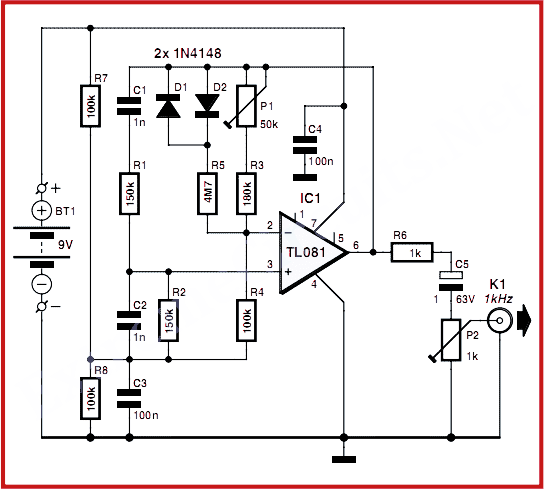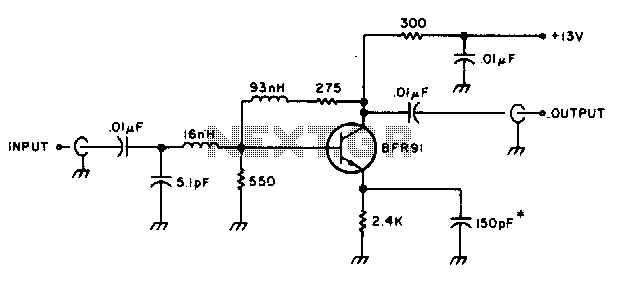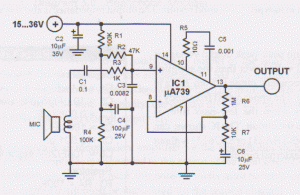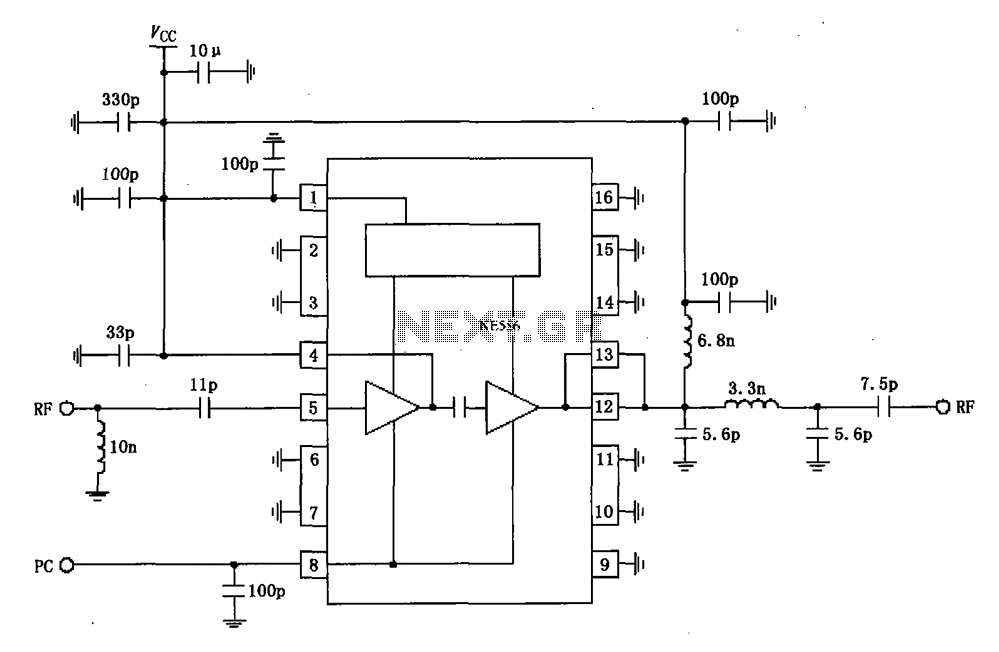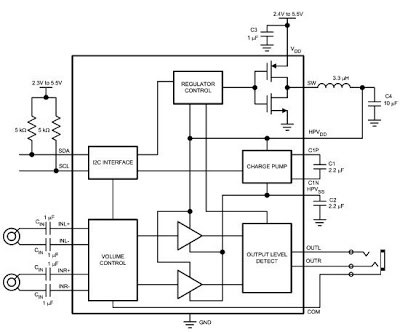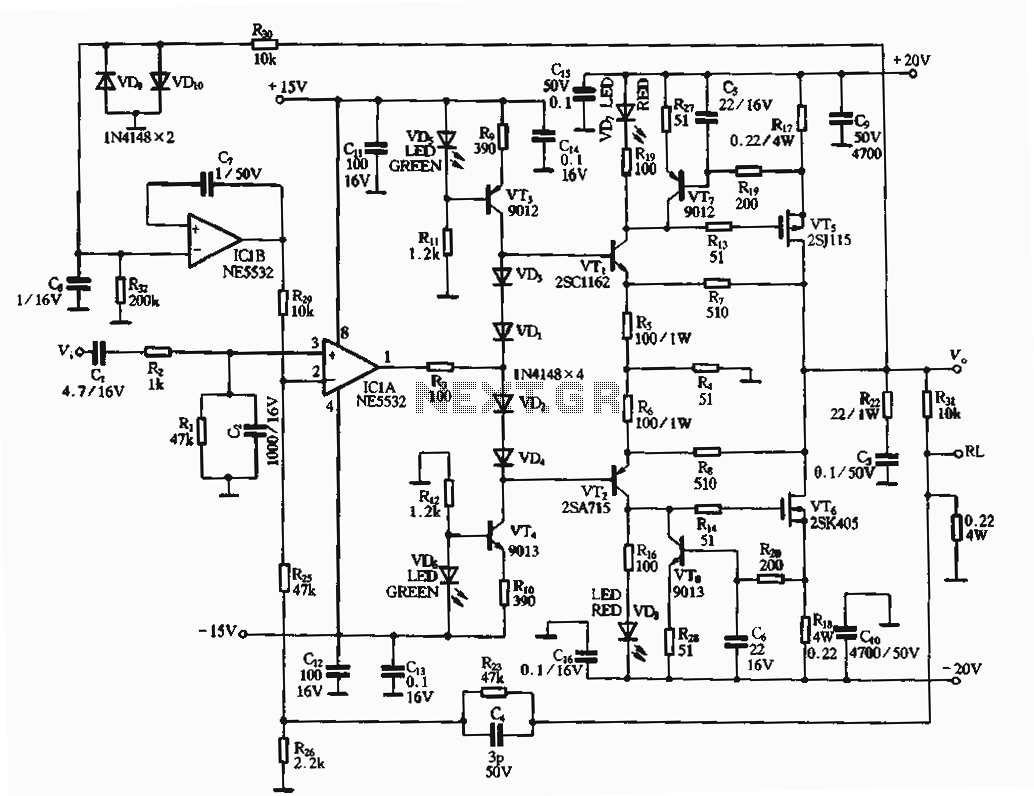
10 watt amplifier for 18MHz
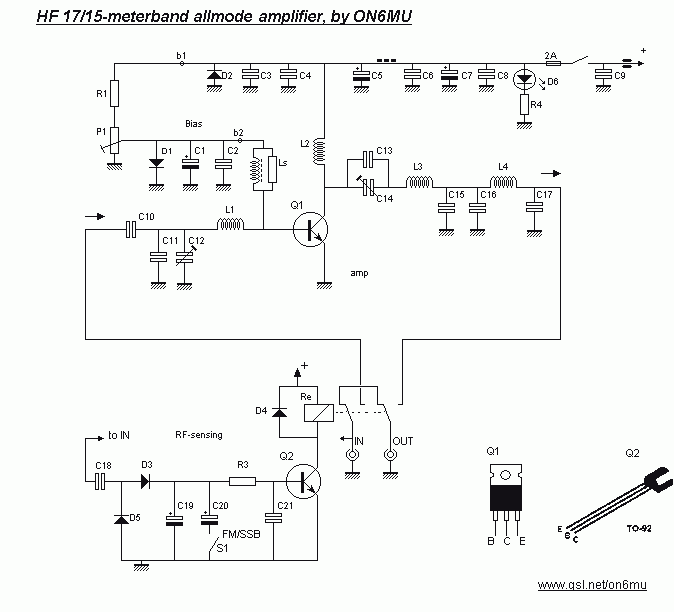
This project and your efforts will provide you with a 0.55...3 watt input to easily 10 watt output. The two linear amplifiers are meant for use with QRP SSB/CW/FM/AM transmitters on the amateur bands 15 and 17 meters can be powered from a 12 volt DC supply. The design is a good balance between output power, physical size. The completed amplifier will reward the builder with a clean, more powerful output signal for a QRP rig when radio conditions become marginal. More: Power amplifiers used in base stations require biasing for proper RF performance. BIAS has to be applied to T1 to have clean proper and correct SSB modulation using this amplifier. Set P1 so +/- 35 mA current flows through T1. Depending on the type of transi
The described project involves the construction of a linear RF amplifier that is capable of transforming an input power of 0.55 to 3 watts into an output power of up to 10 watts. This amplifier is specifically designed to be compatible with QRP (Low Power) SSB (Single Sideband), CW (Continuous Wave), FM (Frequency Modulation), and AM (Amplitude Modulation) transmitters operating within the amateur radio bands of 15 and 17 meters. The amplifier operates from a 12-volt DC power supply, making it suitable for portable or mobile applications.
The design emphasizes a balance between output power and physical dimensions, allowing for a compact assembly that does not compromise performance. The completed amplifier is expected to deliver a clean and powerful output signal, enhancing the capabilities of QRP rigs, particularly under less-than-ideal radio conditions.
In terms of construction, special attention must be paid to the biasing of the amplifier's transistors to ensure optimal RF performance. Proper biasing is critical for achieving clean and accurate SSB modulation. The bias current for the transistor T1 should be set using a potentiometer (P1) to achieve a current of approximately ±35 mA flowing through T1. This adjustment is essential for maintaining the linearity of the amplifier and preventing distortion in the output signal.
Overall, this project not only serves as a practical application of RF amplification technology but also provides valuable experience in working with circuit biasing and modulation techniques relevant to amateur radio operations.This project and your efforts will provide you with a 0.55...3 watt input to easily 10 watt output. The two linear amplifiers are ment for use with QRP SSB/CW/FM/AM transmitters on the amateur bands 15 and 17 meters can be powered from a 12 volt DC supply. The design is a good balance between output power, physical size. The completed amplifier will reward the builder with a clean, more powerful output signal for a QRP rig when radio conditions become marginal.
Power amplifiers used in base stations require biasing for proper RF performance. BIAS has be applied to T1 to have clean proper and correct SSB modulation using this amplifier. Set P1 so +/- 35 mA current flows through T1. Depending on the type of transi 🔗 External reference
The described project involves the construction of a linear RF amplifier that is capable of transforming an input power of 0.55 to 3 watts into an output power of up to 10 watts. This amplifier is specifically designed to be compatible with QRP (Low Power) SSB (Single Sideband), CW (Continuous Wave), FM (Frequency Modulation), and AM (Amplitude Modulation) transmitters operating within the amateur radio bands of 15 and 17 meters. The amplifier operates from a 12-volt DC power supply, making it suitable for portable or mobile applications.
The design emphasizes a balance between output power and physical dimensions, allowing for a compact assembly that does not compromise performance. The completed amplifier is expected to deliver a clean and powerful output signal, enhancing the capabilities of QRP rigs, particularly under less-than-ideal radio conditions.
In terms of construction, special attention must be paid to the biasing of the amplifier's transistors to ensure optimal RF performance. Proper biasing is critical for achieving clean and accurate SSB modulation. The bias current for the transistor T1 should be set using a potentiometer (P1) to achieve a current of approximately ±35 mA flowing through T1. This adjustment is essential for maintaining the linearity of the amplifier and preventing distortion in the output signal.
Overall, this project not only serves as a practical application of RF amplification technology but also provides valuable experience in working with circuit biasing and modulation techniques relevant to amateur radio operations.This project and your efforts will provide you with a 0.55...3 watt input to easily 10 watt output. The two linear amplifiers are ment for use with QRP SSB/CW/FM/AM transmitters on the amateur bands 15 and 17 meters can be powered from a 12 volt DC supply. The design is a good balance between output power, physical size. The completed amplifier will reward the builder with a clean, more powerful output signal for a QRP rig when radio conditions become marginal.
Power amplifiers used in base stations require biasing for proper RF performance. BIAS has be applied to T1 to have clean proper and correct SSB modulation using this amplifier. Set P1 so +/- 35 mA current flows through T1. Depending on the type of transi 🔗 External reference
